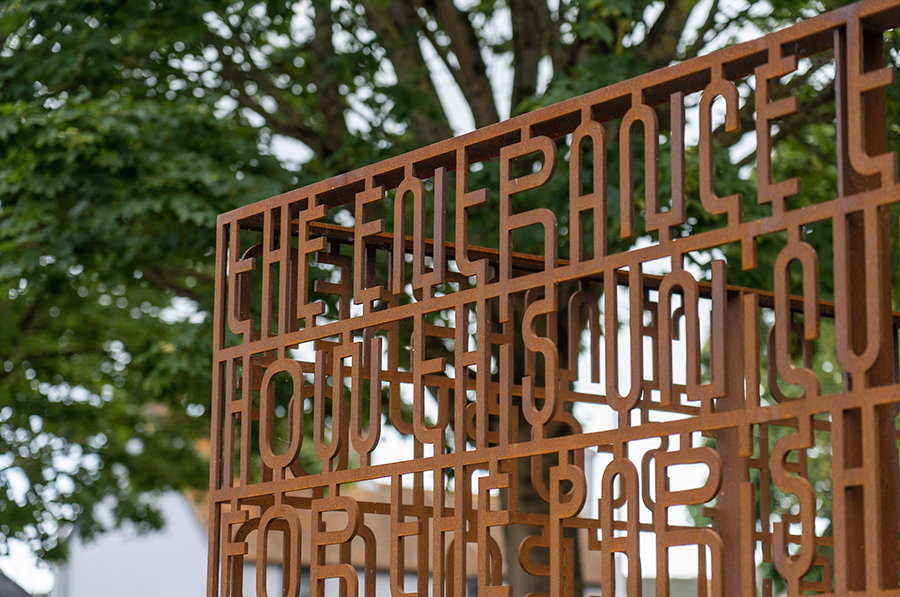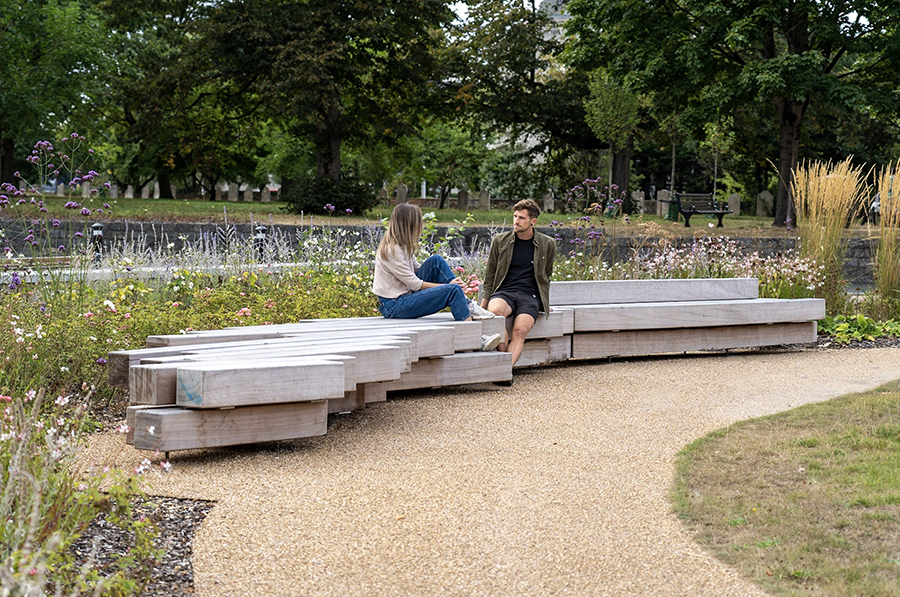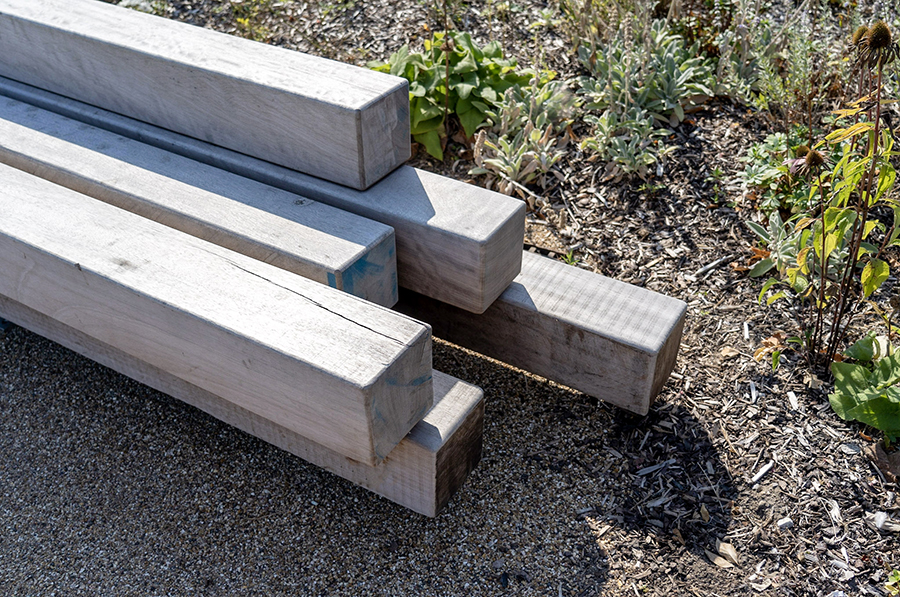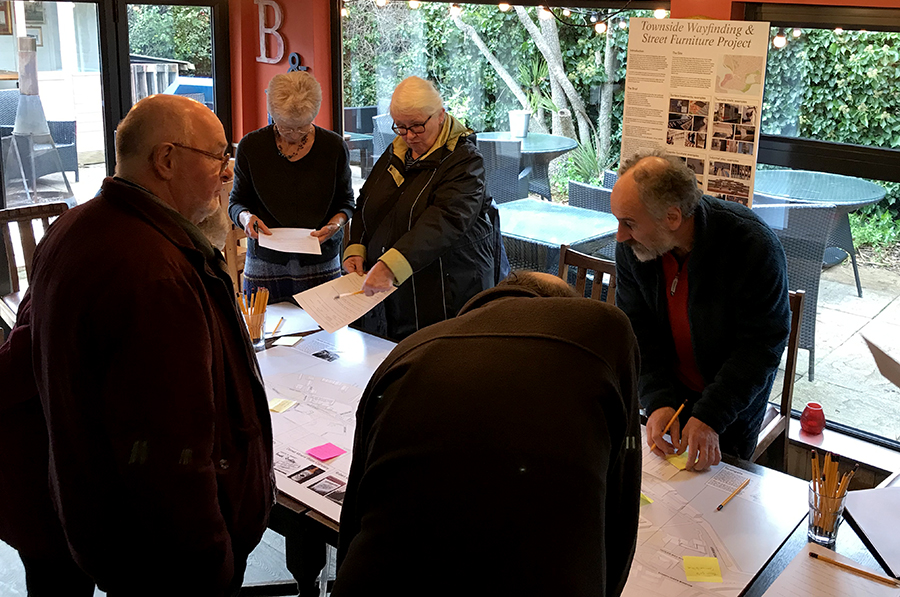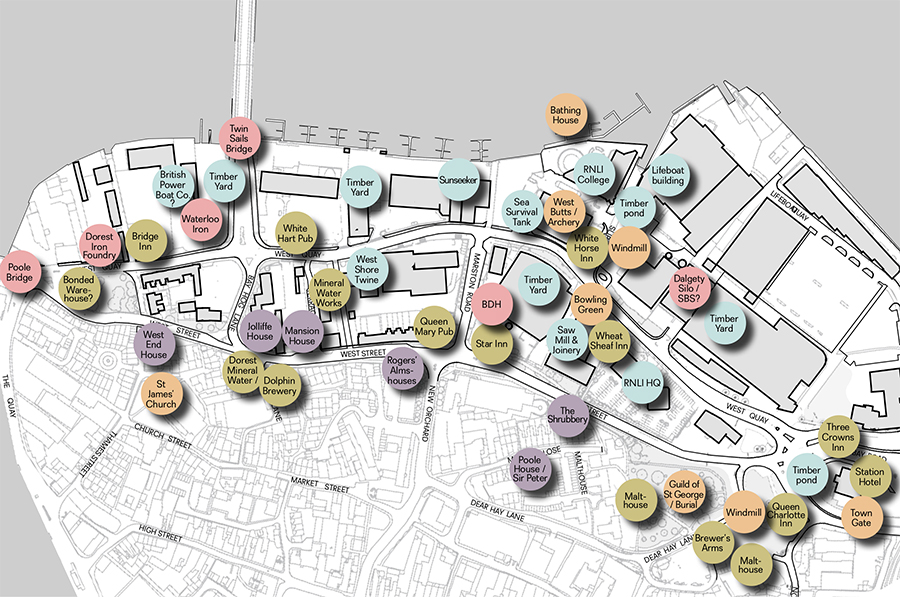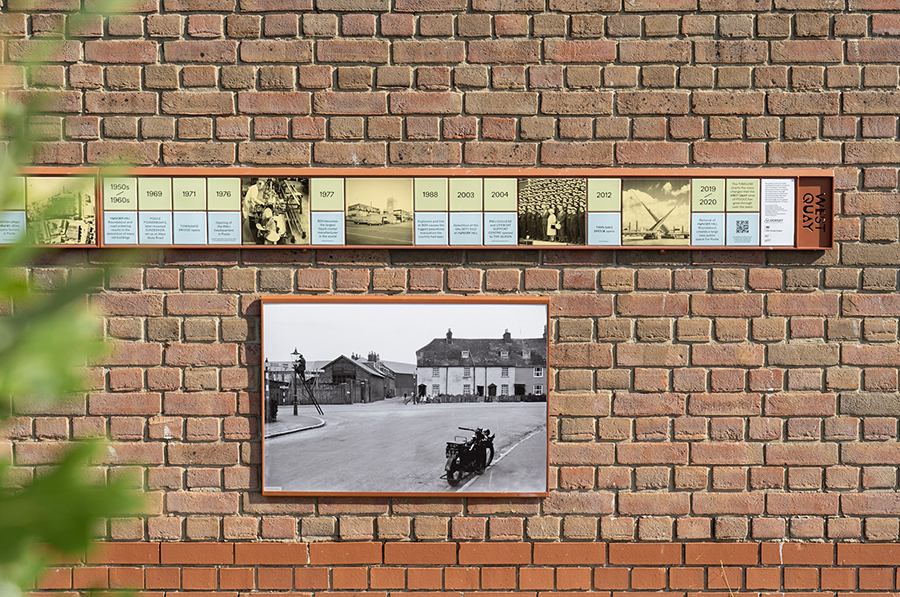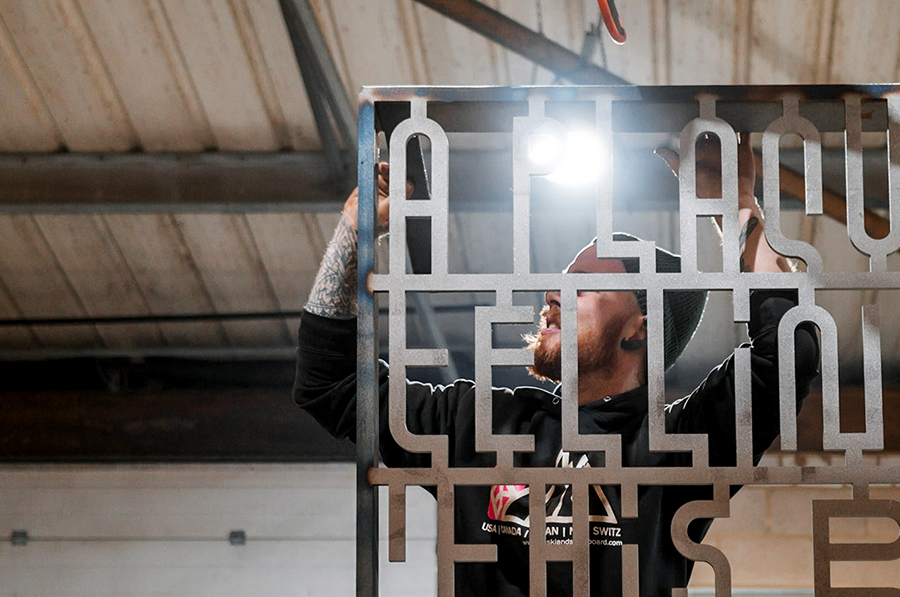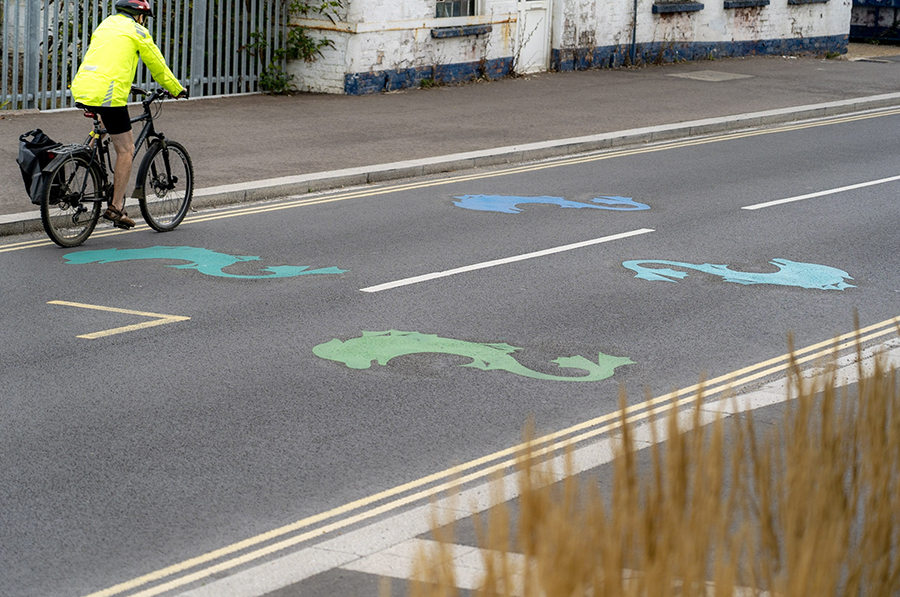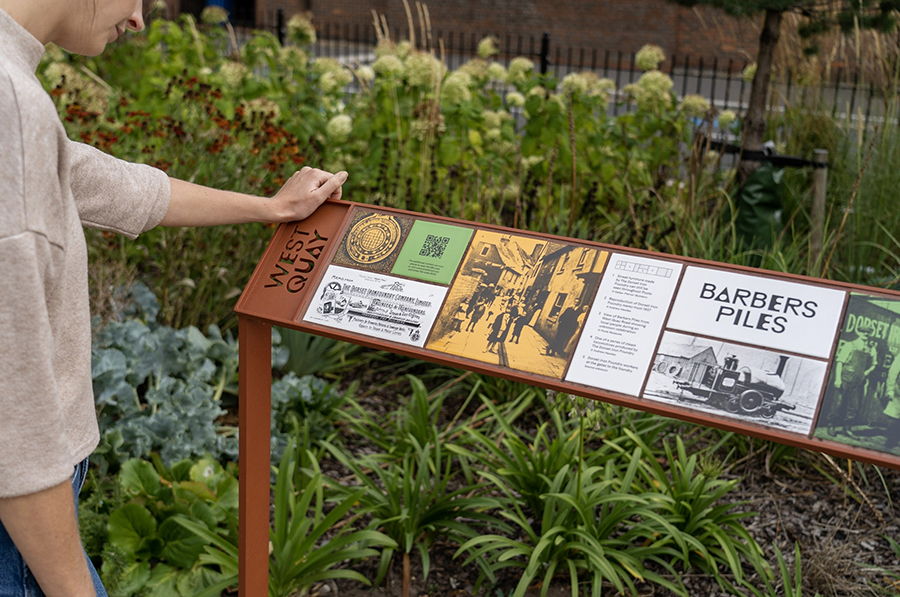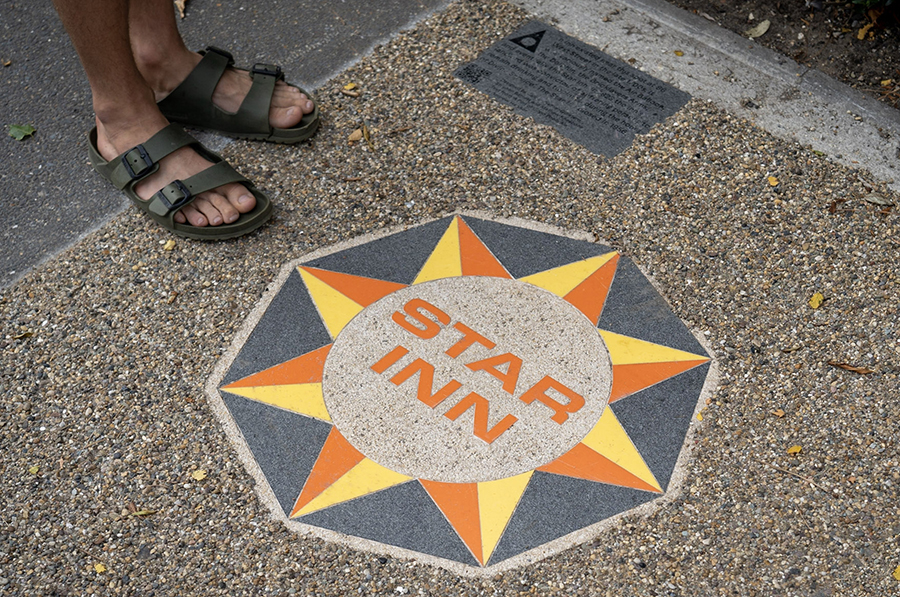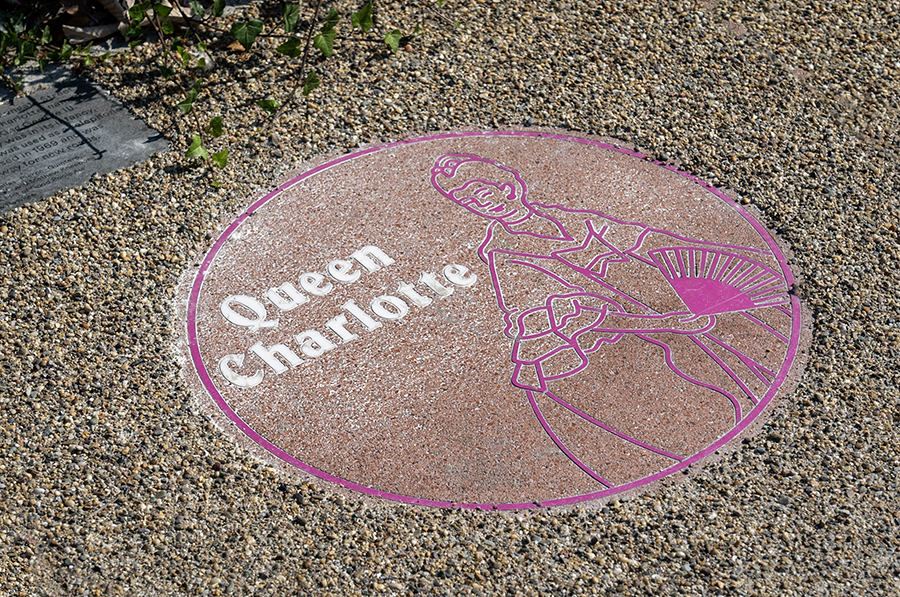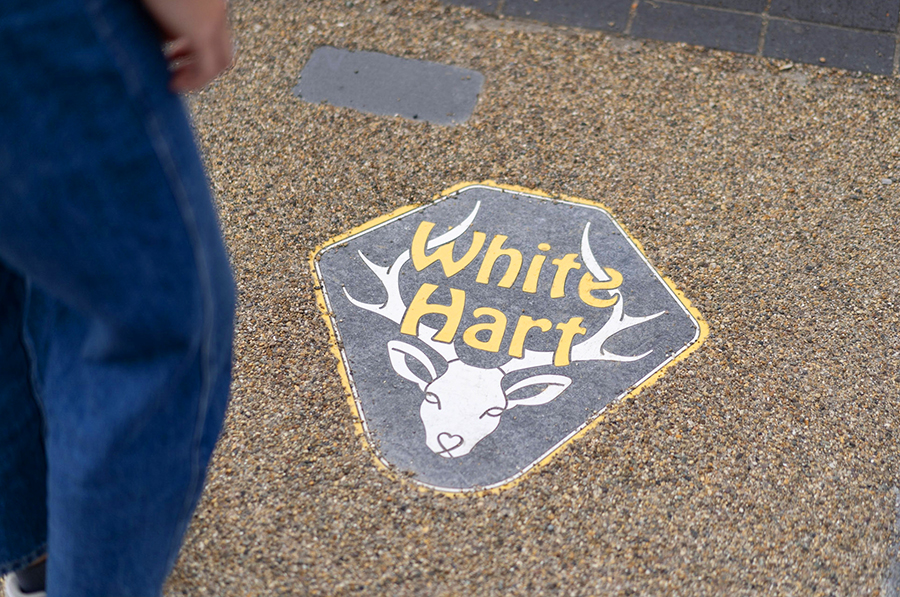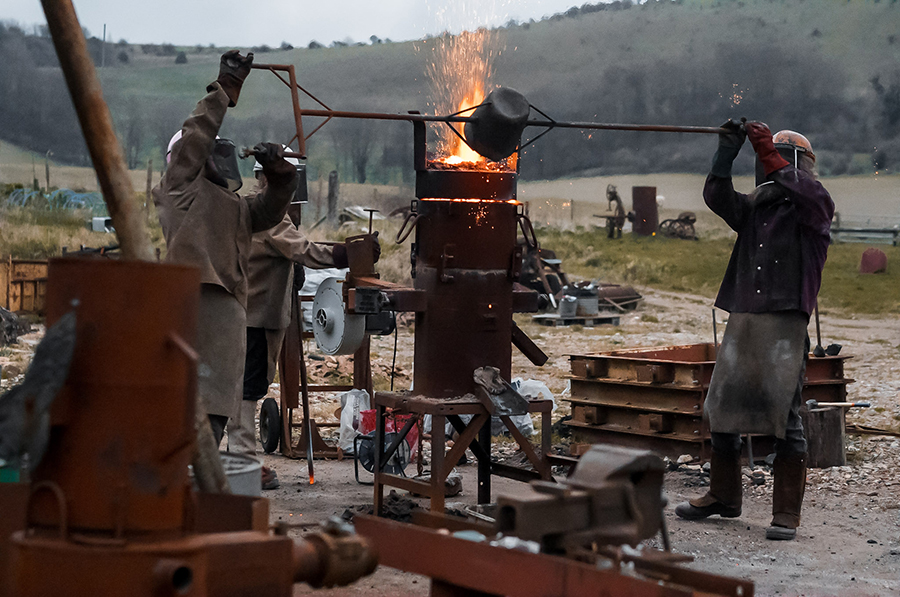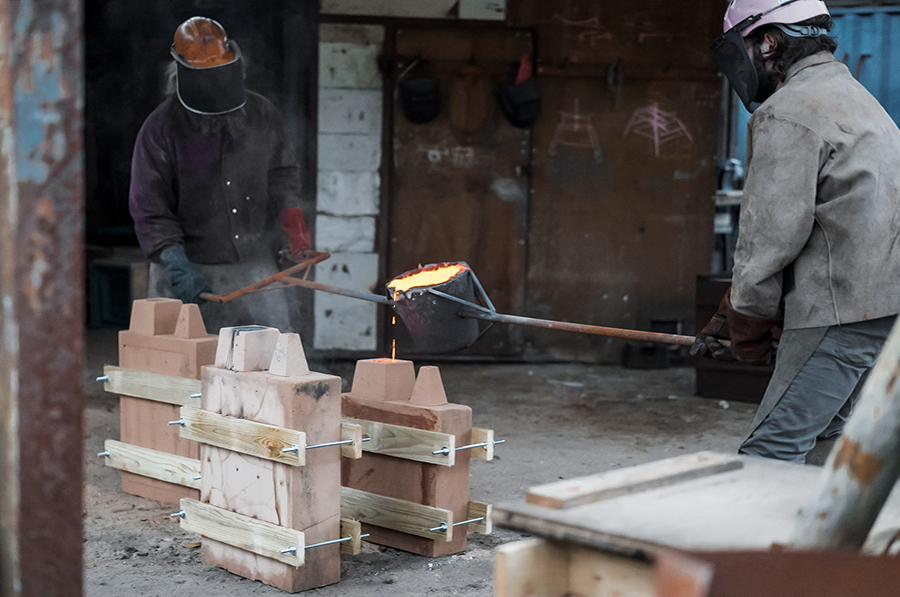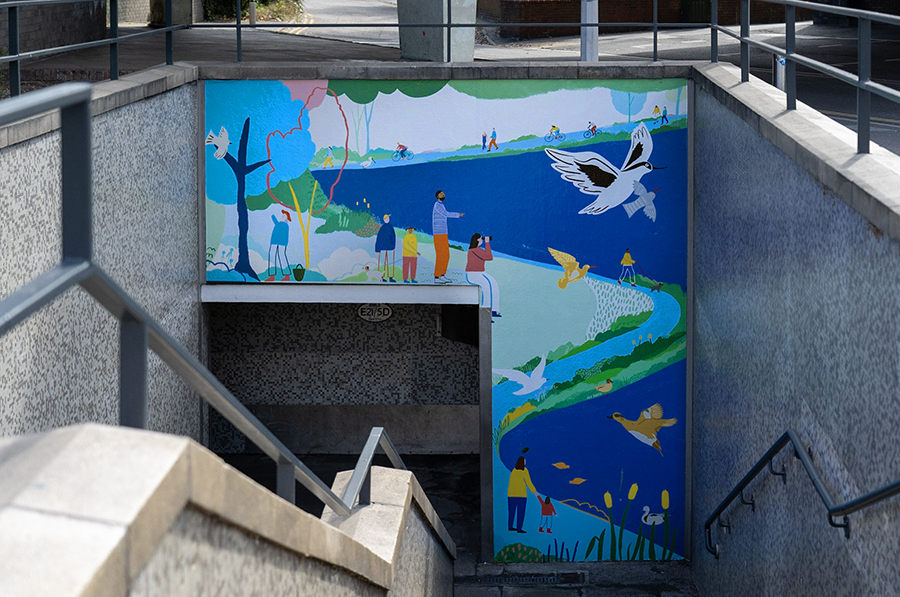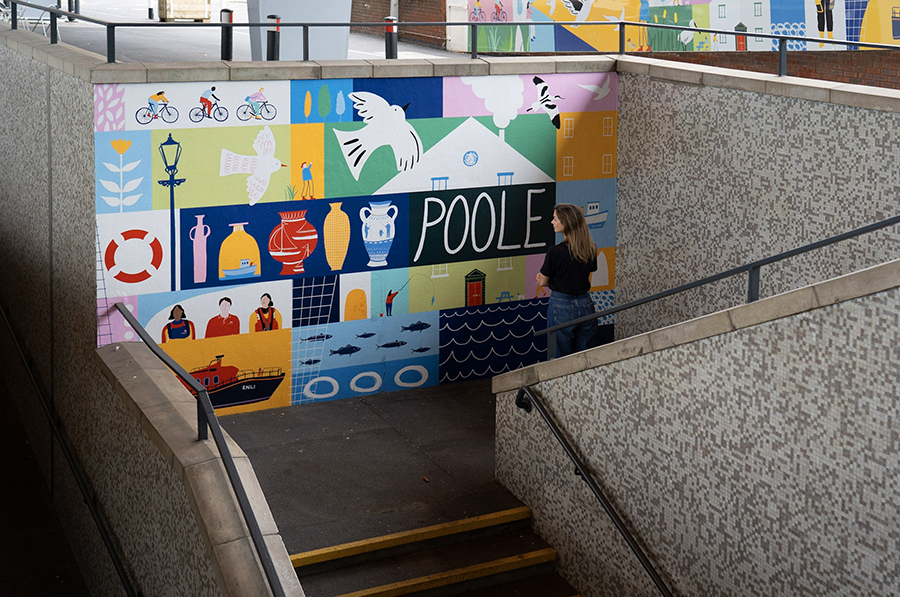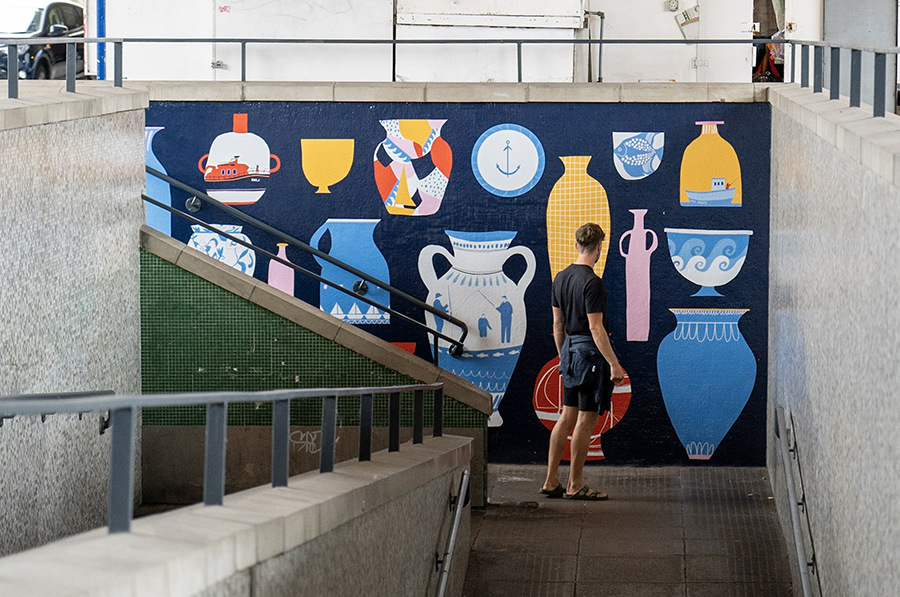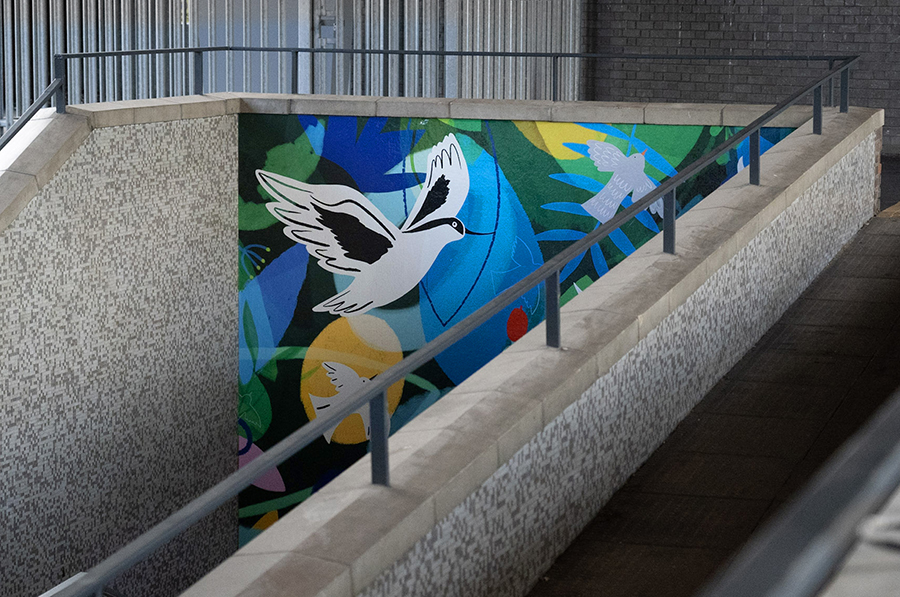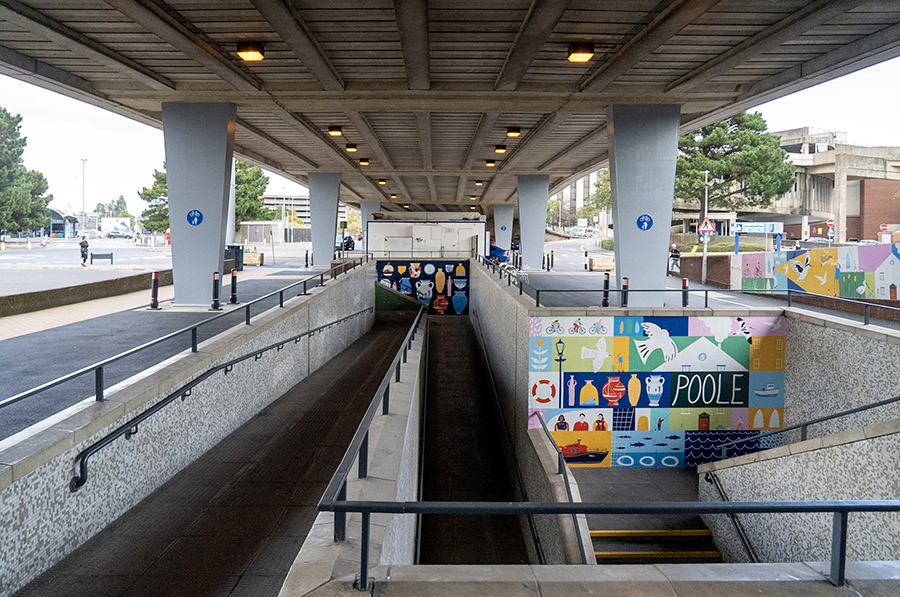West Quay Poole
This series of contemporary, interactive public art, wayfinding and landscape interventions enhance and reconnect the streets and green spaces in an evolving area of Poole. Our approach to placemaking has taken inspiration from the told and documented stories of West Quay to inform a variety of interventions, that signpost local landmarks and amplify the area’s rich heritage and story.
We were appointed by Bournemouth Christchurch & Poole Council in 2018 to develop a wayfinding proposal and public art trail, for the final phase in the Council’s Townside and Hunger Hill improvement scheme, which aimed to enhance sustainable transport connections across Poole. Half a mile in length, the large site area needed a cohesive concept that could offer an accessible, engaging route to guide people between the railway station, the Old Town and Poole’s waterfront.
On our first visit to Poole, it was clear that West Quay was undergoing significant change, transitioning from an industrial hub to a residential-led area. Spending time in the area, we found that evidence of Poole’s shipbuilding history still remained, though traces of the brewing, pharmaceutical and timber manufacturing had disappeared. With these industries playing a defining role in the area’s character historically, we wanted to ensure that these stories of the past weren’t forgotten, and used this heritage to inspire our interventions, and spark a welcoming sense of place, that unites new and existing communities.
The idea for project emerged following a public consultation on improving access between the port and town. Here residents requested more artistic features, to reflect the unique nature of Poole’s identity, and celebrate both the past and present. Our community engagement events with local groups and businesses, as well as drop-in sessions at a local pub, were used to gather feedback and identify potential collaborators. To help us delve further into West Quay’s history, we explored the town’s archives and conducted our research with the help of local historians and Poole Museum, who supplied imagery and historic references around the area’s stories.
A steering group of local councillors, council officers and Poole Quays Forum members oversaw the development of this work. We presented to the group regularly, taking onboard their feedback and responding to their queries. We then developed the scheme in cooperation with the BCP Council’s Transport and Engineering department, to ensure that the necessary approvals were in place and to integrate our works into their wider redevelopment programme.
As we developed our understanding of the area through local conversation and on-site research, we became increasingly excited by the rich and varied history that West Quay had experienced. We wanted to convey these stories through a range of interventions, some of which would be clear and direct, and some would be more subtle.
Starting with the northern end of the trail, interventions include a tiled timeline of West Quay’s development, and a weathervane to highlight nearby points of interest, with a dichroic crystal-shaped wind catcher referencing the area’s role in the development of liquid crystal technology.
Along its path, we designed the trail to improve the connections between a series of much-loved, but otherwise disparate green spaces. To enhance these as destinations for local people, much of our work sought to improve these spaces practically, with new pedestrian and cycle paths, and interventions that provide seating, including a series of bespoke benches, each made from local materials.
One of these green spaces is the Old Burial Ground – a former Georgian graveyard which is now a public park. Here a new staircase into has been wrapped in a laser-cut cor-ten screen. The screen incorporates wording in a bespoke typeface which explains the history of the Old Burial Ground, helping to add context to the place as well as providing a balustrade for the staircase.
Further along the trail, a creative approach to problem solving has manifested in a series of on-road graphics. Designed to act as traffic calming measures in car-heavy areas, these depict dolphins and scallop shells, as referenced from Poole’s coat of arms.
A significant component of the trail are historical information boards, which feature images and information developed in collaboration with Poole Museum. These are made up of steel structures and printed-on porcelain tiles – a nod to Poole Pottery. The colourful, engaging interventions include QR codes that link to additional digital content from the museum archives, expanding the reach of these stories and helping the museum to engage with broader audiences. This content can also be viewed via the museum’s website [link], allowing the trail to be explored from home.
Guided by our multi-disciplinary approach, we took on a creative strategy role within this project, drawing on our network of talented collaborators to embrace all aspects of this multifaceted project.
We commissioned graphic designer Stephen Barrett to create a graphic identity for the area and design a logo which could be used to unite the projects.
Together with Stephen, we also created a series of oversized beermats that were located on the site of former pubs within the area. We were interested in the historical abundance of public houses in West Quay and the social history linked with these, therefore choosing to capture them in a series of ground mounted plaques to be discovered throughout the area.
With experience of working with a wide range of fabricators, here we were committed to ensuring that as many of the pieces as possible were manufactured locally in Poole or Dorset. Not only did this support the local economy and improve sustainability, but it also builds on the manufacturing roots that this area of Poole was known for. We worked closely with Coles Castings in Dorset, to create the cast iron seating from scrap iron. This is located in Maritime Gardens– a focal point of the Council-led landscape work at the southern end of the trail – and offers a nod to the Dorset Iron Foundry, which once operated at on the same site.
All the project’s installations, feature PEFC accredited and full chain of custody certified timber, along with steel which has the potential to be recycled in the future.
Later in the project, our scope increased to include commissioning an artist to produce bespoke murals for the pedestrian subways connecting West Quay to the railway station. We proposed a partnership with Arts University Bournemouth, and worked with the university and the project steering group to commission a recent AUB graduate, Fay Troote. The project funded two current Graphic Design students to assist Fay in the creation of the murals, giving them experience of a live project and allowing a sharing of knowledge. The finished artworks brighten up the grey subways and connect to the themes of our work and the wider area, particularly the nature and local wildlife of nearby Holes Bay.
Residents’ positive feedback demonstrates the scheme’s success, with comments like, “you and the team should be very proud; the planting has transformed an area that was previously so soulless into a place of beauty. No mean feat in the middle of a busy intersection!”
